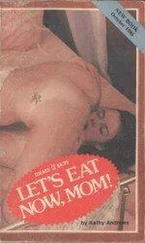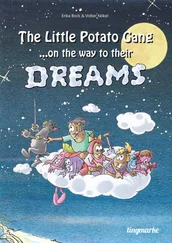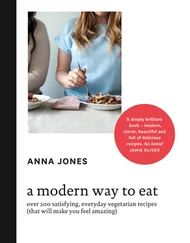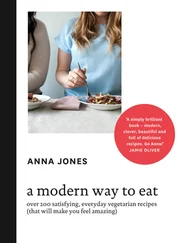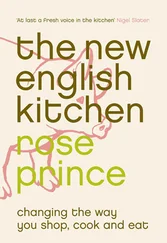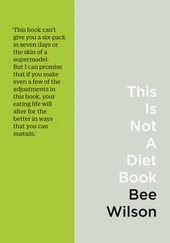The light is fading on a cold winter’s day. I am sitting in a café at the top of the Cambridge University graduate students’ union with Fumiaki Imamura, a 38-year-old scientist. He drinks black coffee; I drink English Breakfast tea. Imamura, who has a Beatles haircut and a bright purple tie, is originally from Tokyo but has spent the past fifteen years in the West, studying the links between diet and health. ‘There are so many myths about food,’ Imamura says. One of the myths he refers to is the notion that there is such a thing as a perfectly healthy diet.
Every single human community across the globe eats a mixture of the ‘healthy’ and the ‘unhealthy’, but the salient question is where the balance falls. Imamura’s research shows that most countries in the world are currently eating more healthy food than we ever did; but also more unhealthy food. Many of us have a split personality when it comes to food, but then this is hardly surprising given how schizophrenic our food supply has become. We have access to more fresh fruit nowadays than we ever did; plus more sugar-sweetened cereals and French fries.
Imamura is a nutritional epidemiologist, meaning that he studies outlines of diet across whole populations to arrive at a more accurate account of how food and health are related. He works in the MRC Epidemiology Unit on the Cambridge Biomedical Campus. Imamura is one player in a much larger research team which straddles multiple universities in the United States and Europe. The overall project is based at Tufts University in Boston and is led by Professor Dariush Mozaffarian, one of the leading scholars currently using big data to measure nutrition in countries worldwide.
In 2015, Imamura was the lead author on a paper in medical journal The Lancet which caused a stir in the world of nutrition science. This team of epidemiologists have been seeking to map the healthiness, or otherwise, of how people eat across the entire world, and how this changed in the twenty years between 1990 and 2010. 9
At this point, you might ask, what counts as a good quality diet? Some would define healthy food in positive terms: how many vegetables and portions of oily fish a person eats. Others define it more negatively, judging it by an absence of sugary drinks and junk food. Clearly, these are two very different ways of looking at the question. Most research on diet and health has lumped the two together, assuming that a high intake of ‘healthy’ fish will automatically go along with a low intake of ‘unhealthy’ salt, for example. But, alas, human beings are inconsistent creatures.
The Japanese, who are generally considered to eat an outstandingly ‘healthy’ diet as rich nations go, consume large amounts of both fish and salt: the one ‘healthy’ and the other ‘unhealthy’. They consume much refined polished white rice (‘unhealthy’) along with copious amounts of dark green vegetables (‘healthy’). Imamura himself still eats a diet centred on vegetables and fish, he tells me, but also a lot of salt in the form of soy sauce, even though as an epidemiologist he is aware that high sodium intake has been linked in numerous studies to high blood pressure. But he is conscious that no population in the world eats exactly the combination of healthy foods that nutritionists might recommend.
There have been many attempts to measure the healthiness of the world’s diet in the past but most studies have treated human eaters as more rational than we actually are. Previous studies have summed together high consumption of healthy foods and low consumption of unhealthy foods. What made Imamura’s paper so innovative – and so much closer to the way we actually behave around food – was that he and his fellow researchers studied healthy and unhealthy foods in two parallel datasets.
Imamura and his colleagues came up with a list of ten ‘healthy’ items: fruits, vegetables, fish, beans and legumes, nuts and seeds, wholegrains, milk, total polyunsaturated fatty acids (the kind of fat found in seed oils such as sunflower), plant omega 3s and dietary fibre. They created a separate list of ‘unhealthy’ items: sugary beverages, unprocessed red meats, processed meats, saturated fat, trans fat, cholesterol and sodium. (Imamura knows that some would quibble with the items on these lists. There is an ongoing debate among nutrition scientists about the healthiness or otherwise of saturated fats versus unsaturated fats. It looks as though the key question with saturated fat, as with other nutrients, is not whether it is unhealthy in absolute terms, but what you choose to eat instead of it. There is evidence that replacing saturated fats with processed carbohydrates can be harmful for heart health, whereas replacing it with olive oil or walnuts may have benefits. 10But based on everything that the epidemiologists currently knew about patterns of diet and health outcomes, these lists were the best they could do.) The researchers then tried to map a pattern of how much of these healthy and unhealthy foods are eaten in any given country.
‘We don’t know very much about what people consume, actually,’ Imamura tells me, disarmingly, sipping his black coffee. ‘Assessment of diet is very difficult.’ Almost all the data we have on what people eat is based on market figures: what commodities come into the country, or how many packets of an item people buy in any given year. This data on supply and production is used as a proxy for what people actually eat. It is useful for mapping big changes in our diets over time – the rise of salmon and the fall of herring, say. Often, food supply data reveals big truths about what we eat that are invisible to us in the daily bustle of shopping and cooking. Much of what I’ll tell you about food in this book will come from market data because often it’s the only hard data available.
But this kind of market data has flaws: for one thing, it offers only a national average, and for another, it does not tell you what happens to the food after it enters the home. Did the consumer steam that bag of green beans and eat them with grilled sardines? Or leave it to rot at the back of the fridge?
Another method of measuring diets is to ask people what they eat, whether over a 24-hour period or in a seven-day diary. Imamura tells me he much prefers survey data to market data because it gives a more detailed picture of how consumers actually behave around food. The snag is that one of the ways we behave around food is that we lie about it: No, I never bought and ate those extra-cheesy nachos. Yes, I eat five fruits and vegetables a day, every day. We also forget things, like that Snickers bar we devoured in haste between meetings.
One way to get around this problem of accuracy is to measure biomarkers in the human body itself, like forensic scientists analysing a corpse. In recent years, epidemiologists have started searching for traces of our diets in blood serum, hair samples and even toenail clippings (toes are used instead of fingers because they are less exposed to outside environmental contamination). Toenail clippings are apparently the best way to measure levels of the mineral selenium in the body – a detail nutrition researchers are interested in, since low selenium correlates with type 2 diabetes and childhood obesity.
The most versatile and commonly used biomarker to determine dietary intake is urine. Unlike toenails, which take weeks to grow back, urine is – how to put this delicately? – endlessly renewable, and it reveals traces of more different foods than any other measure. We haven’t quite reached the point yet where a sample of your urine could tell a researcher that you ate spinach gnocchi for lunch and pumpkin risotto for dinner, but that day may not be far off. In the meantime, urine has most often been used to measure how much salt we eat. Imamura and his colleagues looked at 142 surveys that measured sodium levels in urine, providing data on salt consumption for the majority of adult humans on the planet. 11
Читать дальше

